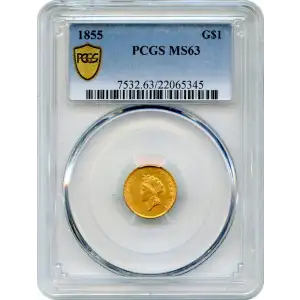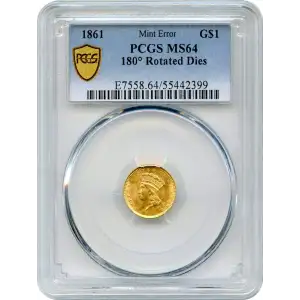- 630-280-7300
- Free shipping over $4,500
A very powerful gold lobby and the public's general distrust of paper currency led to the authorization of the $1 gold piece under the Act of March 3, 1849. Three main types of Gold Dollars were produced, all designed by James B. Longacre. These include the Liberty Head Type 1, 1849-1854; the Indian Head Type 2, 1854-1856 and the Indian Head Type 3, 1856-1889.
The first type, Type 1, was struck on small planchets and issued from 1849 to 1854, and portrayed a "Liberty" head with the denomination and date within a wreath on the reverse. In 1854, the second Type was introduced by increasing the diameter of the coin. Also, the Liberty head was abandoned in favor of a stylized female Indian head. In 1856, the Indian head was enlarged for the Type 3 Gold Dollar. Of the three types, the second is generally the scarcest, although each type does have its own scarcer dates. Gold Dollars were struck at the Philadelphia, New Orleans, Charlotte (North Carolina), Dahlonega (Georgia), and San Francisco Mints.
Looking for a rare coin? Let us help you track it down. Submit your want list and we’ll search our extensive network to match your needs. Whether you're building a set or hunting for a standout item, we're here to assist.
Submit Coin Want List


